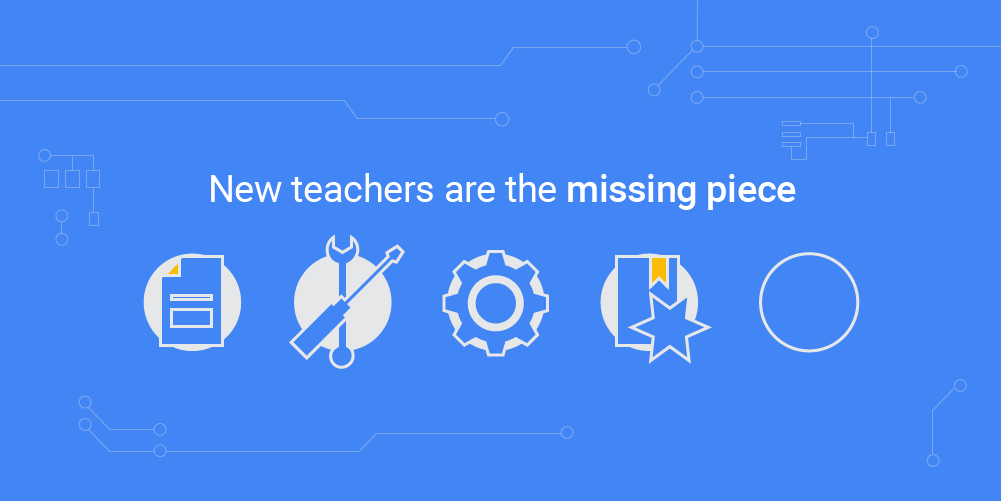The recent White House Announcement of several key initiatives supporting CS4All has put a spotlight on the importance of providing access to Computer Science (CS) education for children in the U.S. But achieving the reality of enabling all students to study CS in school raises a critical question: “Where do we find teachers for these courses?”.
According to the National Center for Educational Statistics, there are close to 126,000 schools in the U.S. with 58% of those reporting at least one computer science class (Trends in the State of Computer Science in U.S. K–12 Schools). To make sure that ALL schools have a CS course, we need more than 53,000 teachers to fill the current gap. We also need a guaranteed pipeline of incoming teachers to replace those who retire or leave the profession every year.
But unfortunately, there are very few new CS teachers in the pipeline. According to the Department of Education, in the 2013-14 school year (the most recent statistics available) somewhere between 46 and 77 new CS teachers graduated in the U.S (depending on whether you look at the graduation figures by area or by academic subject). That’s a pretty drastic gap.
There are two ways to increase this number. The first involves transitioning current teachers from other fields to CS. This has been largely the focus of efforts by organizations such as the National Science Foundation’s CS10K program and Code.org’s direct work with 120+ school districts. These programs may meet existing demands for CS teachers/courses but do not allow for the predicted need. The long-term solution is to increase the number of new teachers coming out of teacher preparation programs. So far, efforts in this area have been few and far between.
As noted in a previous post, the CS teacher certification system in the U.S. is deeply flawed. The majority of states do not have a CS teacher certification or endorsement. And while there is a growing number of states interested in creating these programs, they all need a way of ensuring that new teachers know what they need to know.
What if there was a way to jumpstart the new teacher pipeline by allowing teachers to demonstrate that they are ready to teach CS? For example, 39 states use Praxis exams for the purposes of licensure, but only 8 of these states (AR, ID, MD, ND, TX, WI, WV, and WY) currently have one for computer science—an exam under license from Texas. A CS licensure exam with buy-in from all states, however, could be used by both new teachers and by those already teaching in some other discipline to demonstrate that they are ready to teach CS. Such an exam could additionally allow teachers to more easily transfer their credentials to other states.
Of course, a nationally recognized testing body or vendor would need to develop such a test; it would need to be vetted as comprehensive and appropriate by the CS education community; and states would need to buy into the exam by officially recognizing if for a CS certification or endorsement.
Such an exam does not yet exist, and it wouldn’t address all of the factors contributing to the growing CS teacher shortage. But it could eliminate a key barrier for teachers who are ready to teach now and states that are truly committed to CS4All. Google is now working with the CS education community to explore interventions and ideas that could help to overcome these barriers.
